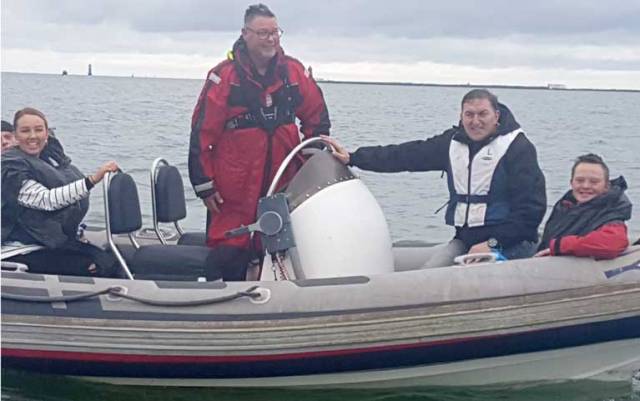St. Michael’s House, one of Ireland’s largest providers of community-based services for individuals with intellectual disabilities has teamed up with Clontarf Yacht & Boat Club for a spin on the Dublin waves for their fourth annual fishing trip. This year’s sailing event was held on 13th June 2019 and was supported by Dublin City Council.
The sailing crew was made up of service users from St. Michael’s House Short Term Training Centre, Adare Hub, Raheny Hub, Coolock Hub, and Mask Road facilities. The crew, alongside members of Clontarf Boat & Yacht Club, braved the choppy conditions of the River Liffey to sail a new route to Grand Canal Basin travelling through the locks with the assistance of Waterways Ireland and the support of neighbouring clubs Poolbeg Yacht Club and Eastwall Watersports.
Patricia Davis, Tutor at St Michael’s House Short Term Training Centre said: “We are extremely grateful to everyone at Clontarf Yacht & Boat Club who have been kind enough to show their support for this annual initiative. The day would not have been possible without the assistance of volunteers from Clontarf Boat & Yacht Club who provided the technical know-how and peace of mind to all of those on board.’’
Larry Meaney, Executive Committee Member at Clontarf Yacht & Boat Club said: “Clontarf Yacht & Boat club were delighted to host the annual fishing trip for service users from St. Michael’s House. The trip this year was a great success, and we introduced an alternative programme which proved very popular. In addition to the sailing, our guests took part in some crab fishing on the slip. We are also very thankful to the local councillors for their support particularly Sean Haughey TD, Finian Mc Grath TD and Councillor Ciaran O Moore".
Service users on the sailing excursion were introduced to the foundations of water safety by the experts on hand and the group finished their trip with a well-deserved BBQ to warm up after spending the day on the water. The St. Michael’s House fishing trip was the first of three taking place this summer, with the CRC Clinic and Portmarnock Arch Club set to take a spin on the Dublin waves later this month.

























